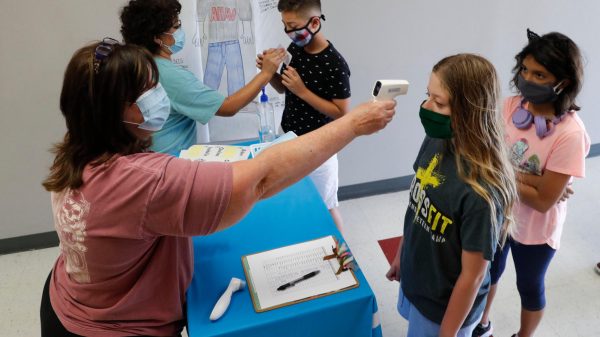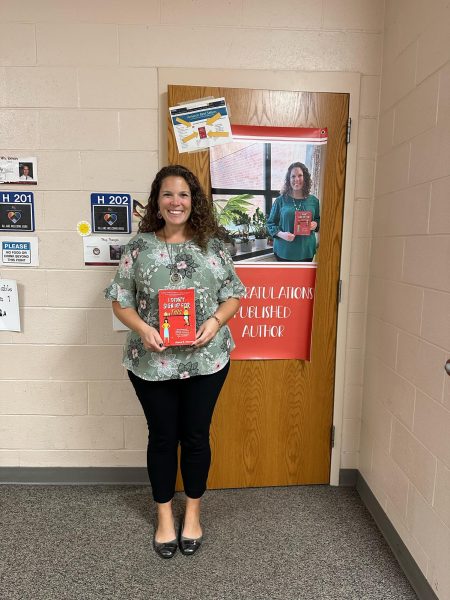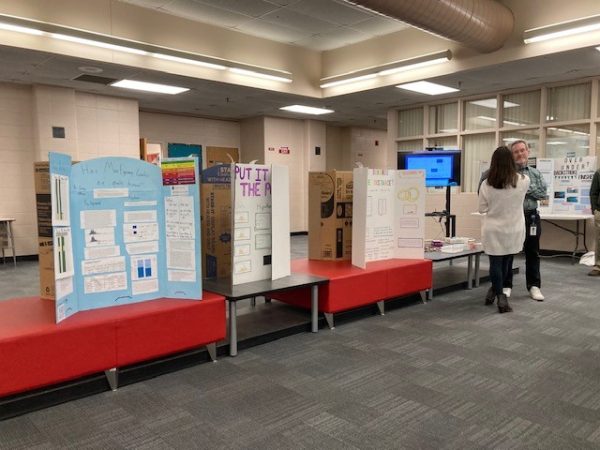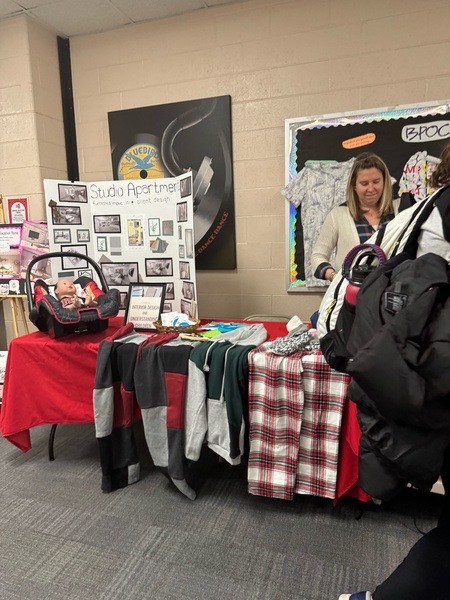How Do Students, Faculty, and Staff View Going Back Full-Time?

On April 6, 2021—after over a full year of abnormal life—Hatboro-Horsham went back to five days a week for those students who opt to be in school. Here are three perspectives on the change–from a teacher, a student and a principal.
“From a social standpoint, being fully virtual was really sad,” said choir teacher Mrs. Allison Lagan.
Mrs. Lagan explained how difficult it was to teach music without being to hear her students. Being virtual also affected the pacing of her classes.
“My teaching is very conversational and waiting for microphones to be unmuted, takes much longer to make things happen,” she said. This year, Mrs. Lagan has done fewer musical pieces to make learning repertoire easier.
“This way we can really hone a smaller amount of music since the pacing has become slower,” she added.
When she found out that the district was going back full time, Mrs. Lagan said she was filled with joy. She was excited to see her kids again and experience more socialization. Even though Mrs. Lagan knew classes were going to be smaller, this still did not let that diminish her happiness.
“My mental health has gotten a lot better since five days a week,” Mrs. Lagan said. “Now that we are back five days, I wake up excited to go back to school and be with my students.”
In terms of teaching, the pacing of her classes became faster.
“This is because I have some students directly in front of me,” she said.
However, Mrs. Lagan viewed that there are new challenges that come from this new adjustment. Mrs. Lagan described herself as a “split person,” since she has some students still virtual, and others are in the room with her.
“I try to do everything I can to best serve both of the groups,” she added.
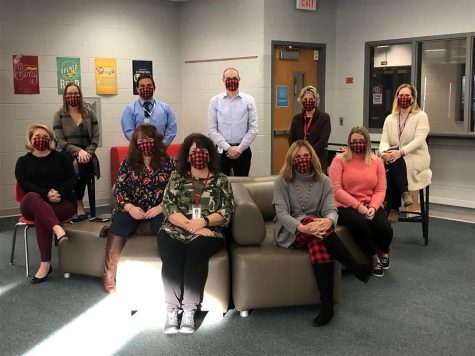
Teachers are not the only ones who have had to adjust to the past year, students have too. It is no surprise that senior year is the most important and special year in a high schooler’s life. With that being said, COVID has affected the normal senior year festivities.
“This pandemic has been really hard,” said senior Gaby Alezard. Gaby expressed that going into her senior year, she was very unmotivated and experienced some disappointment.
“I didn’t feel like doing anything. Most of my motivation came from the fact that I had to pick a college,” she said.
Gaby described how the virtual setting affected her mood and learning ability. She found herself angrier since she did not have the social aspect of school:
“I wasn’t angry toward the teachers or the assignments I had to do, but the fact that I couldn’t perform as well as I hoped.”
Gaby even described that her grades dropped from the lack of motivation. Even though everyone was going through the same thing, Gaby felt very alone.
“This was very difficult to deal with since I felt like no one understood what I was going through,” she explained. Gaby grieved the loss of prom and all the normal activities that made up the last years of high school.
To Gaby, hybrid was an amazing experience for the time being. “I got some time at home and some time in,” she explained.
However, when Gaby found out school was returning full time, she was ecstatic and did not hesitate to jump on the opportunity. She knew that she had to always wear a mask, but this did not stop her from coming in-person. Gaby was happy that she could visit old teachers and socialize with her friends just like she did in old times.
When asked how returning five days a week changed her senior year, Gaby replied, “It’s definitely made it better.” Returning full time has given her the opportunity to reconnect with people she lost touch with.
“Last year I was so afraid that I wouldn’t be friends with anyone since all my friends were seniors. So, going back I found myself becoming friends with new people,” she explained
When it comes to her learning, Gaby feels like she has improved since the full return.
“It’s so easy to not try on an assignment or two when you are at home,” she said. Gaby explained that now she has to study, pay attention and be prepared for the next day.
“Once I got back into the rhythm of it, it was just so easy. It just really feels what was normal at one point,” she said. Due to the return of five days a week, Gaby feels more motivated to do her work and learn.
She said, “I can sit down in class and get so much done, as to when I was home, I would get that same thing done in three days.”
Safety-wise, Gaby feels that five days a week is very safe.
“Everyone wears their masks and wears them respectfully,” she illustrated. She also believes that the teachers are doing an amazing job enforcing the safety guidelines.
Being virtual has not only affected students, but principals too.
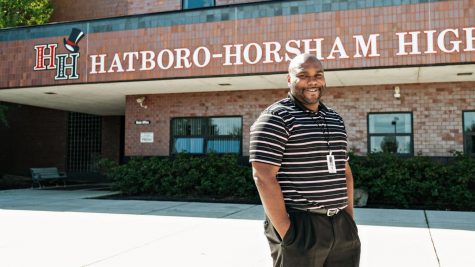
“One of the most frustrating pieces was the idea of not being able to do some of the traditional things,” said head principal Mr. Dennis Williams. Mr. Williams explained how pep rallies, sporting events, spirit weeks and hallway décor creates a different environment and a new level of excitement in school. With COVID, this has not been able to happen.
“It has forced us to rethink things,” Mr. Williams said regarding the pandemic. He said that getting a student to come meet with him is easier now that the school uses Microsoft Teams. His belief is that even though the pandemic has been full of challenges, there have been some positives that came from it.
When asked how mental health has been while in a virtual setting, Mr. Williams replied, “It’s been crazy. Some sleepless nights.”
Mr. Williams sees the pandemic from both sides. He wants to do what is right for students’ safety and his family’s safety. In preparation for full-time return, Mr. Williams did not have any worries.
“Because we spent two-plus months having kids back in the building (even though it was three hundred eight on one day and four hundred on another day) it got us back in the rotation of having kids in the building,” he says. However, Mr. Williams described that he was hesitant when first coming back full time.
“The only hesitation was, would we be able to do it safely? Would we be able to maintain six feet in places like the cafeteria? If we did have a positive case, how would we respond?”
Even though this new adjustment has its positives, it has also had its challenges. He explained how it is hard to social distance with more kids in the classroom.
“Now you’ve got classrooms with seventeen, eighteen, nineteen, twenty kids, you can’t socially distance,” he said. Mr. Williams added that it has been tough to remind kids to keep their masks on. This struggle has mostly taken place during lunches. He has observed that students pull down their masks to eat and then get too comfortable and forget to pull them back up once they are finished.
When asked how the student body has been following the school’s safety procedures, Mr. Williams said, “I would give us a C plus, B minus.” He explained how students have been doing a great job in classrooms and mostly amazing in hallways.
“We are trying to have conversations and trying to encourage kids,” he said.
By sending students into Cohort C—after they have had multiple warnings to follow safety procedures— and by talking to them, he thinks the kids will understand how seriously they should take this pandemic.





